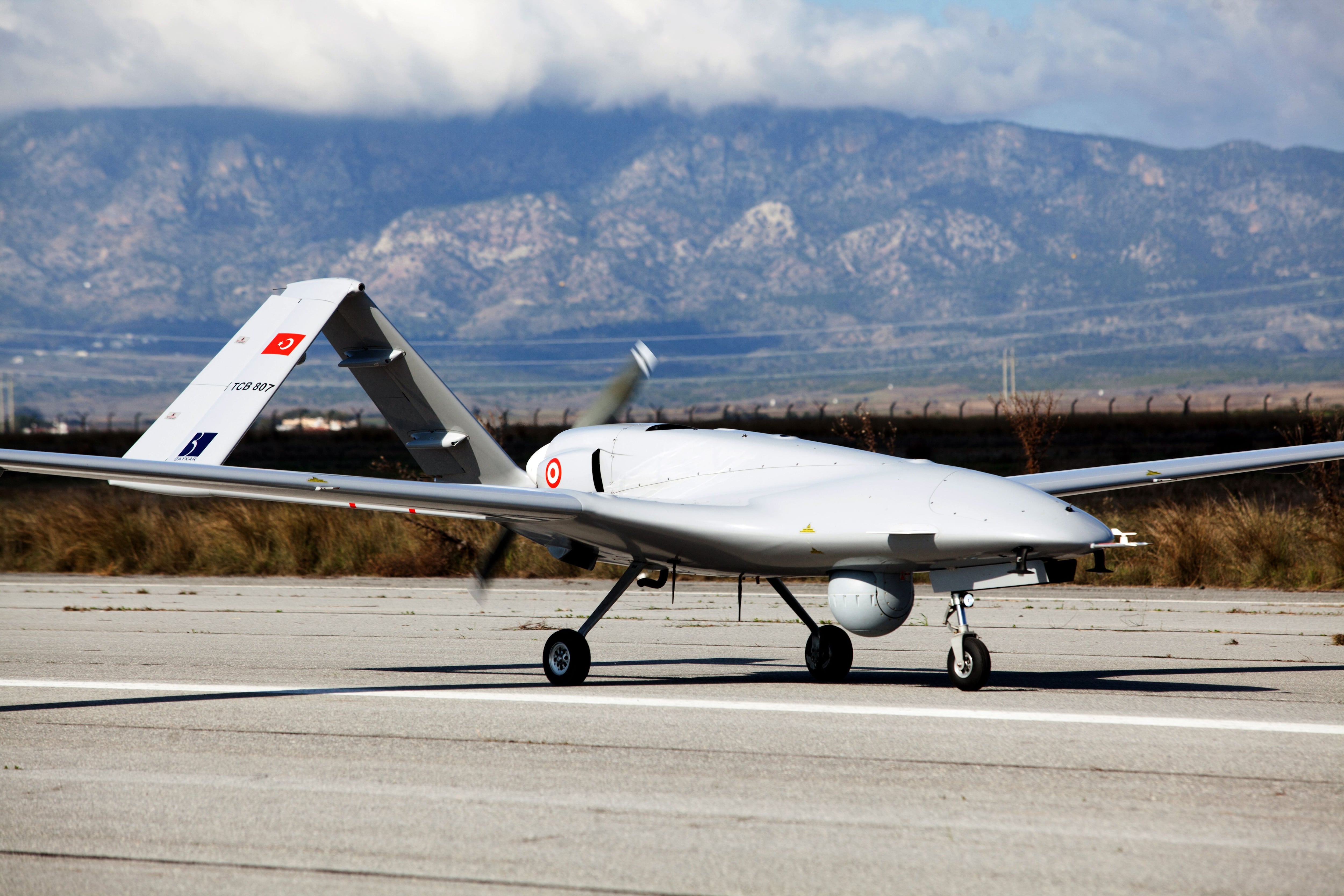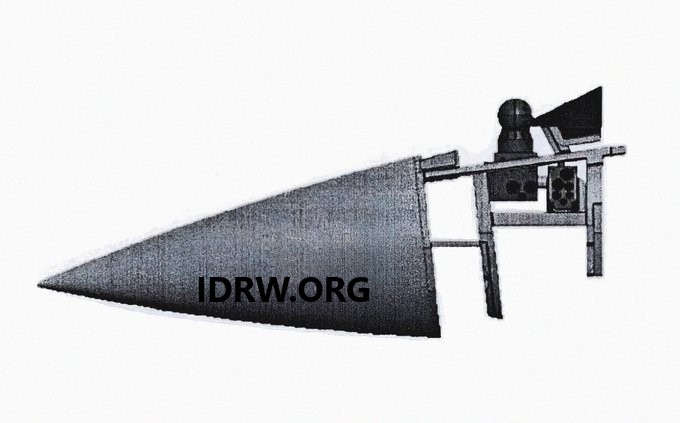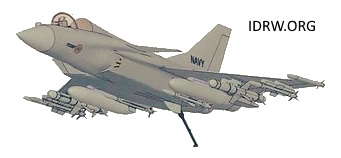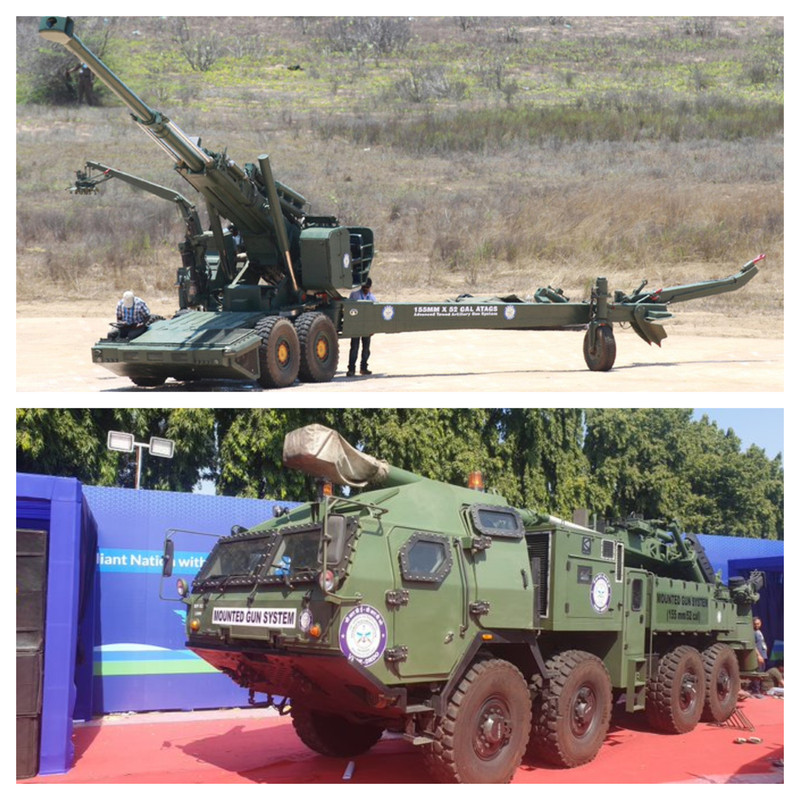SOURCE: AFI

India’s Advanced Medium Combat Aircraft (AMCA) program is making strides towards developing a next-generation fighter jet. One of the intriguing features planned for the AMCA is the integration of boarding ladders, similar to those found on the French Rafale M and the American F-35. While seemingly a minor detail, these integrated ladders offer some distinct advantages.
Fifth-generation fighter jets prioritize low radar observability, and anything protruding from the aircraft’s fuselage can increase its radar signature. Traditional, retractable boarding ladders add a bulky element that disrupts the smooth, radar-absorbent contours of the aircraft. Integrating the ladder into the fuselage eliminates this protrusion, maintaining the AMCA’s stealth profile.
Continue readingSOURCE: AFI

The Bayraktar TB2 drones, hailed as a game-changer in Ukraine’s military arsenal, are facing new challenges as the conflict with Russia evolves. Once lauded for their role in assisting Ukrainian forces in achieving military successes, these Turkish-made drones are now finding their utility limited amid the bolstering of Russian air defenses, according to Ukrainian military officials.
At the outset of the conflict, the Bayraktar TB2 drones were instrumental in providing Ukrainian forces with crucial intelligence, surveillance, and reconnaissance capabilities. Their ability to stay airborne for up to 27 hours allowed for extended monitoring of enemy movements and positions, providing Ukrainian commanders with valuable situational awareness on the battlefield. Additionally, these drones were capable of conducting precision strikes on high-value targets, contributing to Ukrainian efforts to counter Russian advances.
Continue readingSOURCE: AFI

In a display of remarkable teamwork, the Indian Air Force (IAF) successfully airlifted an injured Indian Army soldier whose hand had been severed while operating machinery in a forward area. The prompt action ensured the soldier received critical surgery within a vital window, saving his appendage.
According to reports, the incident occurred earlier this week. With only 6-8 hours for a successful reattachment surgery, the IAF swiftly deployed a C-130J Super Hercules aircraft within an hour to transport the soldier to the specialized Army’s Research and Referral (R&R) Hospital in Delhi.
Continue readingSOURCE: RAUNAK KUNDE / NEWS BEAT / IDRW.ORG

The upcoming Tejas MkII fighter jet program is inching closer to a key milestone with the planned initiation of flight trials for its Infrared Search and Track (IRST) system. Tender documents reveal that Hindustan Aeronautics Limited (HAL) is gearing up for these crucial tests. The IRST system, indigenously developed by the Defence Research and Development Organisation (DRDO), will significantly enhance the Tejas MkII’s combat capabilities.
The documents hint at a two-phase flight test program. The initial phase will see the IRST system integrated into a Hawker 800 aircraft. This mid-size twinjet has previously served as a test platform for the Uttam AESA radar, another critical Tejas MkII technology. The Hawker 800’s role in the IRST trials allows for a controlled environment to assess the system’s performance before integrating it into the Tejas MkII prototype.
Continue readingSOURCE: RAUNAK KUNDE / NEWS BEAT / IDRW.ORG

The Indian defence scene has been buzzing with discussions about a potential deck-based version of the AMCA (Advanced Medium Combat Aircraft) – the N-AMCA – for the Indian Navy. However, People familiar with the program have finally spilled the beans and have told idrw.org that this project was shelved in favour of a more practical solution which was TEDBF (Twin Engine Deck Based Fighter).
When the AMCA program began for the Indian Air Force (IAF), the Navy saw an opportunity. They envisioned a carrier-borne variant the N-AMCA that could leverage the AMCA’s technology while offering the Navy a 5th-generation fighter jet. This approach promised cost savings due to its commonality with the IAF version.
Continue readingSOURCE: RAUNAK KUNDE / NEWS BEAT / IDRW.ORG

The effectiveness of towed artillery guns has been a topic of debate in the wake of the Ukraine conflict. While counter-battery fire has proven adept at quickly targeting towed guns, the Indian Army remains committed to their use alongside Mounted Gun Systems (MGS).
The war in Ukraine has shed light on the vulnerability of towed artillery to counter-battery fire. Advanced radar technology allows enemy forces to locate the origin of artillery fire within minutes, potentially putting towed guns at risk. This has led some former Indian Army officials to advocate for a full transition to MGS.
Continue readingSOURCE: AFI

Stepan Mikoyan’s memoir, “Stepan Mikoyan: Memories of Military Test-flying and Life with the Kremlin’s Elite,” offers a fascinating glimpse into the negotiations surrounding India’s first purchase of MiG-21 fighter jets.
Mikoyan, a test pilot’s son with close ties to the Soviet aviation industry, describes the arrival of the Indian delegation at Kubinka Air Base. Their task was to evaluate the MiG-21 for a potential production license purchase.
Continue readingSOURCE: AFI

The strategically located Andaman and Nicobar Islands are undergoing a significant modernization of their military infrastructure. This upgrade aims to strengthen India’s presence in the region and enhance its ability to monitor and secure the vital trade routes of the Indo-Pacific.
Airstrips at key naval air stations are being extended in phases to accommodate larger aircraft like P8I maritime patrol planes and fighter jets. Additionally, jetties are being enlarged to handle bigger warships.
Continue readingSOURCE: AFI

Continuing its series of Emergency Landing Facilities (ELF) activations across India, the Indian Air Force (IAF) recently brought an ELF online in the crucial western sector. This activation involved cooperation from various government organizations, highlighting a coordinated effort to bolster national security.
The newly activated western sector ELF witnessed the maiden operations of the C-295 MW transport aircraft and the Tejas light combat aircraft. These landings mark a significant milestone, demonstrating the IAF’s ability to operate these new platforms from austere locations.
Continue readingSOURCE: AFI

For the past year, Russia has significantly increased its deployment of glide bombs in the Ukraine war. The size and launch rate of these bombs have risen sharply in recent months.
Glide bombs offer a cost-effective alternative to traditional artillery. Launched from beyond Ukrainian air defense reach, these bombs pack a hefty punch, carrying 500 kg to 1,500 kg of explosives and creating massive craters. This destructive power, combined with their lower cost compared to shelling, makes them a potentially attractive option for Russia.
Continue readingSOURCE: IDRW.ORG TEAM.

India’s ballistic missile defense (BMD) program is set for a significant upgrade with the development of a new Long Range Radar (LRR), according to the Ministry of Defence’s (MoD) Annual Report for 2022-23. This radar system promises enhanced detection, identification, and tracking capabilities for ballistic missiles.
The LRR’s arrival coincides with the ongoing Phase-II of India’s BMD program. This phase, expected to be operational by 2026-27, will see the induction of two new interceptor missiles, further strengthening India’s multi-layered missile defense architecture. The LRR’s superior detection, tracking, and data transmission capabilities will be instrumental in ensuring the effectiveness of these new interceptor missiles.
Continue readingSOURCE: IDRW.ORG TEAM.

Bharat Electronics Limited (BEL), a leading Indian defense and aerospace company, has unveiled a groundbreaking innovation: a zero-emission Unmanned Surface Vehicle (USV) designed for hydrographic surveying and coastal surveillance. This versatile USV boasts eco-friendly operations and the potential for various applications, making it a valuable asset for both civilian and defense purposes.
The USV stands out for its commitment to sustainability. It leverages solar energy harvesting to power its operations, eliminating harmful emissions and reducing reliance on fossil fuels. This makes it an ideal solution for environmentally sensitive tasks like surveying and monitoring marine ecosystems.
Continue readingSOURCE: AFI
Australia and India are forging a closer partnership in the crucial area of Underwater Surveillance driven by concerns about China’s growing underwater military presence. This collaboration holds significant potential for enhancing maritime security in the Indo-Pacific region.
Underwater Surveillance refers to the ability to track and understand activities happening underwater, including submarine movements, underwater mines, and other potential threats. Effective UDA is essential for safeguarding vital sea lines of communication, protecting critical infrastructure, and deterring underwater aggression.
Continue readingSOURCE: AFI

The Indian Navy successfully completed the maiden landing gear replacement of a P8I aircraft in a mere six days, showcasing the collective expertise and collaborative spirit of the team involved. The complex operation, undertaken between April 1st and 6th, 2024, at INS Rajali, involved a composite team comprising personnel from M/s AIESL, Mumbai and Indian Navy representatives.
The swift and flawless execution of this critical maintenance feat underscores the Indian Navy’s commitment to maintaining mission-readiness of its P8I fleet. The P8I is a long-range maritime patrol aircraft that forms a vital part of India’s maritime surveillance and reconnaissance capabilities. A functional landing gear system is critical for the safe operation of the aircraft.
Continue readingSOURCE: AFI
General Christopher G. Cavoli, head of US European Command and NATO’s Supreme Allied Commander, presented a measured assessment of Russia’s military capabilities during a Congressional hearing on April 10th. While acknowledging Ukrainian successes, he highlighted the relative strength of the Russian Air Force.
General Cavoli stated that Russia’s Air Force has only lost around 10% of its fleet despite over two years of war in Ukraine. Russia’s strategic forces, long-range aviation, cyber capabilities, and space capabilities reportedly remain largely intact.
Continue reading